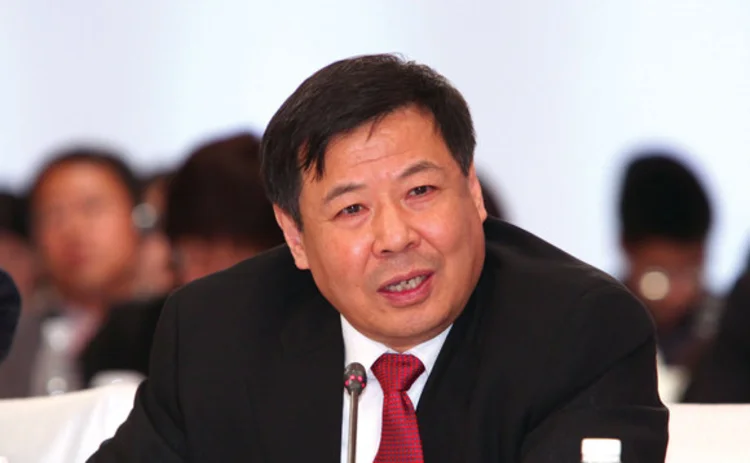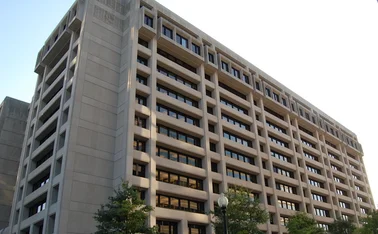
Zhu Guangyao on China's 'new normal', investment and external pressures
Vice-minister of finance on Chinese economic policy and external challenges

What should we infer from the leadership statement that "the Chinese economy has entered into a state of new normal"?
From my perspective, the ‘new normal' proposed by president Xi Jinping has three implications. First, the gear of China's economic growth is shifting from high speed to medium-to-high speed. This speed is still very high by world standards and also helps maintain the sustainability of our economy. What president Xi has in mind is how to achieve long-term sustainable economic development of China in the coming decade or so.
Second, to fit into the ‘new normal', a thorough implementation of economic structural reform is needed. Sustainable economic development is led and driven by structural economic reform. During the reform period, economic policies are required to secure a more sustainable growth. Therefore, we should continue to take an approach that achieves economic, social, cultural and ecological progress. Great importance should be placed on environmental issues, and Chinese people should be able to enjoy a higher living standard.
Meanwhile, innovation should replace traditional factors as the new driving force of economic growth. This is a fundamental transition of the growth model. Investment is key to the traditional factor-driven economic growth model. To replace traditional factors with innovation as the new stimulus requires a new spirit of reform. We should combine innovation and reform together and enhance investment quality.
What are the major aspects of improving investment quality?
Improving investment quality concerns three aspects. First, the adjustment of investment quality should be combined with economic structural adjustments, which include mixed ownership reform and public private partnership reform. We should promote the increasing role of private enterprises and small businesses in economic development, and promote private sector participation in infrastructural construction by encouraging financing models such as co-operation between the government and private capital.
Second, improving investment quality involves addressing the relationship between poverty reduction and investment. President Xi has said the realisation of a well-off society lies in the contribution of village residents. Therefore, enhancing investment quality requires us to comprehensively combine economic structural adjustments and poverty reduction strategies to continue to increase investment in remote poor areas and make infrastructure investment play more of a leading role in reducing poverty. Poverty reduction is the key indicator to realising a well-off society.
Third, improving investment quality involves addressing the relationship between investment and environmental protection. We should promote green credit and give more emphasis to the impact of investment projects on the environment and society.
How do you assess the external economic environment faced by China?
The global economy this year faces the most complicated and challenging environment since the outbreak of the financial crisis.
First, currency policies of developed countries are changing. For instance, the Federal Reserve is expected to initiate the normalisation of interest rates. Second, the crude oil price may continue to drop. Third, unstable factors still exist in the eurozone. Fourth, geopolitical risks are resulting in uncertainty; and fifth, the ups and downs of emerging market economies will continue to exert influence on the world.
Will external environment changes greatly affect the Chinese economy?
The influence of the uncertain external environment is definitely increasing and the current environment is complex. But the best approach to stabilising our economic development is to deepen structural reform. The tone of fiscal and monetary policies has been settled. We should now ensure that proactive fiscal policy is actually proactive, and adjust - retune and fine-tune - prudent monetary policy in response to the complicated environment. The People's Bank of China has already taken related measures, including reducing the deposit and loan rate twice and lowering the deposit reserves requirement ratio. All these measures are taken in response to the complicated internal and external environment.
What is your take on this year's proactive fiscal policy?
Last year, the Central Economic Work Conference made clear arrangements in this aspect. In 2015, we will continue to implement proactive fiscal policy and sound monetary policy, on which this year's Report on the Work of the Government has made a comprehensive plan. Implementing proactive fiscal policy faces both domestic and overseas challenges, but fiscal policy should play a more important role in promoting economic structural adjustment.
The effect of proactive fiscal policy can already be displayed in two aspects. First, there has already been progress in structural trade reductions, especially the tax reduction for micro and small businesses. Second, tax reductions will be widely and comprehensively applied, and fees will be removed.
In addition, as premier Li Keqiang has mentioned, the two engines that drive growth - economic structural adjustments and more investment in public goods provision - are the essence of a proactive fiscal policy. Indeed, the current external and domestic situation makes issues such as local government debt more complicated. But no matter how difficult it is, we must address the problems left from the previouslarge-scale economic stimulus plan, including local government debt.
Therefore, we should implement the new budget law that has already taken effect, which makes issuing government bonds the only legal channel of raising capital for local government. And issuing bonds should be regulated strictly by the law and promoted in accordance with existing policies.
We should maintain stability during the transition, prevent any regional or systematic risk and ultimately solve the problem of local government debt.
Only users who have a paid subscription or are part of a corporate subscription are able to print or copy content.
To access these options, along with all other subscription benefits, please contact info@centralbanking.com or view our subscription options here: http://subscriptions.centralbanking.com/subscribe
You are currently unable to print this content. Please contact info@centralbanking.com to find out more.
You are currently unable to copy this content. Please contact info@centralbanking.com to find out more.
Copyright Infopro Digital Limited. All rights reserved.
You may share this content using our article tools. Printing this content is for the sole use of the Authorised User (named subscriber), as outlined in our terms and conditions - https://www.infopro-insight.com/terms-conditions/insight-subscriptions/
If you would like to purchase additional rights please email info@centralbanking.com
Copyright Infopro Digital Limited. All rights reserved.
You may share this content using our article tools. Copying this content is for the sole use of the Authorised User (named subscriber), as outlined in our terms and conditions - https://www.infopro-insight.com/terms-conditions/insight-subscriptions/
If you would like to purchase additional rights please email info@centralbanking.com








